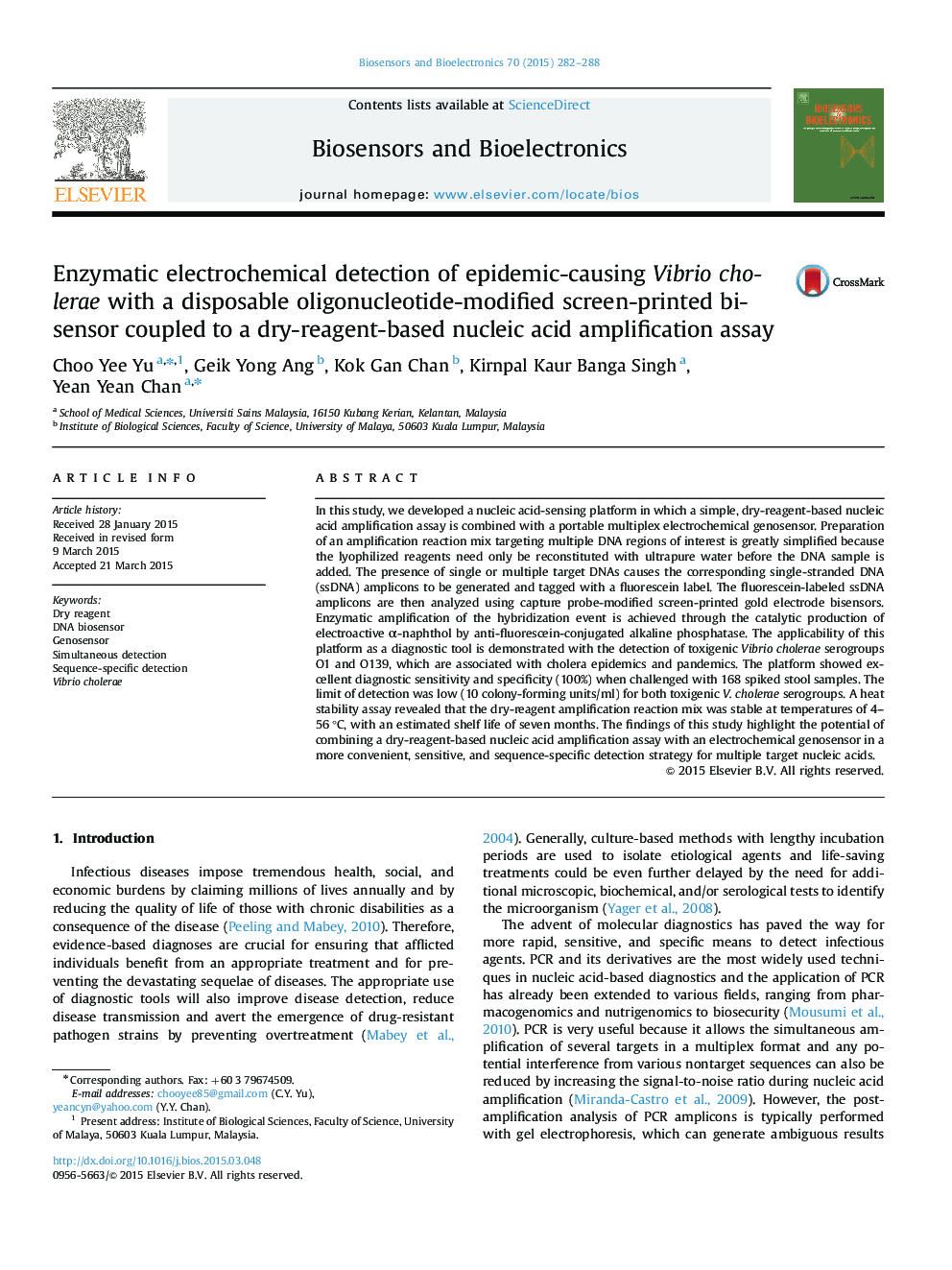| Article ID | Journal | Published Year | Pages | File Type |
|---|---|---|---|---|
| 7232040 | Biosensors and Bioelectronics | 2015 | 7 Pages |
Abstract
In this study, we developed a nucleic acid-sensing platform in which a simple, dry-reagent-based nucleic acid amplification assay is combined with a portable multiplex electrochemical genosensor. Preparation of an amplification reaction mix targeting multiple DNA regions of interest is greatly simplified because the lyophilized reagents need only be reconstituted with ultrapure water before the DNA sample is added. The presence of single or multiple target DNAs causes the corresponding single-stranded DNA (ssDNA) amplicons to be generated and tagged with a fluorescein label. The fluorescein-labeled ssDNA amplicons are then analyzed using capture probe-modified screen-printed gold electrode bisensors. Enzymatic amplification of the hybridization event is achieved through the catalytic production of electroactive α-naphthol by anti-fluorescein-conjugated alkaline phosphatase. The applicability of this platform as a diagnostic tool is demonstrated with the detection of toxigenic Vibrio cholerae serogroups O1 and O139, which are associated with cholera epidemics and pandemics. The platform showed excellent diagnostic sensitivity and specificity (100%) when challenged with 168 spiked stool samples. The limit of detection was low (10 colony-forming units/ml) for both toxigenic V. cholerae serogroups. A heat stability assay revealed that the dry-reagent amplification reaction mix was stable at temperatures of 4-56 °C, with an estimated shelf life of seven months. The findings of this study highlight the potential of combining a dry-reagent-based nucleic acid amplification assay with an electrochemical genosensor in a more convenient, sensitive, and sequence-specific detection strategy for multiple target nucleic acids.
Related Topics
Physical Sciences and Engineering
Chemistry
Analytical Chemistry
Authors
Choo Yee Yu, Geik Yong Ang, Kok Gan Chan, Kirnpal Kaur Banga Singh, Yean Yean Chan,
